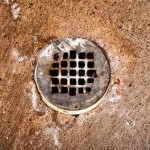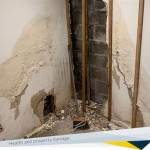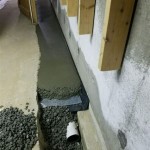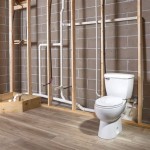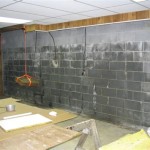What Does A Sump Pump Do In A Basement Floor?
A sump pump is a critical component for maintaining a dry and usable basement, particularly in areas prone to high water tables, heavy rainfall, or poor drainage. Its primary function is to remove accumulated water from a sump, a pit typically located in the lowest part of the basement floor. Without a sump pump, this water can lead to significant problems including structural damage, mold growth, and loss of personal property.
The presence of a sump pump indicates a vulnerability to water intrusion. This vulnerability might stem from several sources such as groundwater seepage through foundation walls and the floor, rainwater runoff accumulating around the foundation, or plumbing leaks within the home. The sump pump acts as a safeguard, preventing minor water accumulation from escalating into a full-blown flooding situation.
Understanding the purpose and operation of a sump pump is paramount for homeowners seeking to protect their investment and maintain a healthy living environment. Proper installation, regular maintenance, and awareness of potential issues are all essential for ensuring the sump pump functions reliably when needed.
Prevention of Water Damage
The most significant role of a sump pump is to prevent water damage to the basement and the entire structure of the house. Water accumulating in a basement can cause a multitude of problems. It can weaken the foundation over time, leading to cracks and structural instability. The hydrostatic pressure exerted by the water against the foundation walls can cause them to bow inward or even collapse in extreme cases.
Furthermore, excess moisture promotes the growth of mold and mildew, which can lead to health problems, particularly for individuals with allergies or respiratory sensitivities. Mold spores can become airborne and circulate throughout the house, contaminating the air quality and requiring costly remediation efforts.
Water damage can also destroy personal belongings stored in the basement, including furniture, electronics, and valuable documents. Replacing these items can represent a substantial financial burden. By effectively removing water, a sump pump mitigates these risks and protects the homeowner's investment.
In addition to the direct damage caused by water, prolonged exposure to moisture can also attract pests such as insects and rodents. These pests thrive in damp environments and can cause further damage to the property and pose a health risk to occupants. The sump pump, by maintaining a dry basement, helps to deter these unwanted guests.
The timely removal of water also prevents the saturation of building materials such as drywall, insulation, and carpeting. Wet drywall and insulation lose their effectiveness and can harbor mold growth. Replacing these materials can be a costly and time-consuming process. A functional sump pump minimizes the likelihood of such repairs.
Maintaining a Healthy Living Environment
Beyond preventing structural damage, a sump pump plays a crucial role in maintaining a healthy living environment within the home. As previously mentioned, excess moisture can lead to the growth of mold and mildew, which release spores into the air. These spores can cause a variety of health problems, including allergic reactions, respiratory irritation, and even more serious conditions in susceptible individuals.
A damp basement can also contribute to increased humidity levels throughout the house. High humidity can create an uncomfortable living environment and exacerbate respiratory problems such as asthma. By removing excess water, the sump pump helps to control humidity levels and improve the overall air quality.
Furthermore, a dry basement is less likely to harbor pests such as dust mites, which thrive in humid environments. Dust mites are a common allergen and can trigger allergic reactions in sensitive individuals. By reducing humidity, the sump pump helps to minimize the dust mite population and reduce the risk of allergic reactions.
A sump pump also helps to prevent the accumulation of musty odors that are often associated with damp basements. These odors are caused by the growth of mold and mildew and can be unpleasant and even harmful. By removing the source of moisture, the sump pump eliminates the conditions that promote the growth of these odor-causing organisms.
By maintaining a dry and healthy basement, the sump pump contributes to the overall well-being of the occupants. It helps to create a more comfortable and breathable living environment, reducing the risk of health problems associated with excess moisture and mold growth.
How a Sump Pump Operates
A sump pump operates on a fairly straightforward principle. The pump is positioned inside a sump pit, which is a hole dug in the basement floor. The pit is designed to collect water that enters the basement through various sources. When the water level in the pit reaches a certain point, a float switch activates the pump.
The float switch is a mechanical device that rises and falls with the water level. When the float reaches a predetermined height, it triggers the pump to turn on. The pump then draws water from the pit and discharges it away from the foundation through a discharge pipe. The discharge pipe typically leads to the yard, a storm drain, or a dry well.
Once the water level in the pit is lowered to a certain point, the float switch deactivates the pump, stopping the water removal process. The pump remains inactive until the water level rises again and triggers the float switch. This cycle repeats as necessary to maintain a dry basement.
There are two main types of sump pumps: submersible pumps and pedestal pumps. Submersible pumps are designed to be submerged in the water within the sump pit. They are generally more powerful and quieter than pedestal pumps. Pedestal pumps, on the other hand, are positioned above the water, with only a hose extending into the pit to draw water. They are typically less expensive than submersible pumps but can be noisier and less efficient.
Both types of sump pumps require a power source to operate. It is essential to have a reliable power supply to ensure the pump functions when needed. Many homeowners choose to install a battery backup system to provide power to the pump during power outages. This is particularly important in areas prone to severe weather events that can disrupt the power grid. Without a backup system, the sump pump will be rendered useless during a power outage, potentially leading to basement flooding.
The effectiveness of a sump pump depends on several factors, including the size of the pump, the height of the water table, and the amount of rainfall in the area. It is important to choose a pump that is appropriately sized for the specific needs of the home. A pump that is too small may not be able to keep up with the water influx, while a pump that is too large may cycle too frequently, leading to premature wear and tear.
Regular maintenance is also crucial for ensuring the reliable operation of a sump pump. This includes cleaning the sump pit to remove debris, inspecting the float switch to make sure it is functioning properly, and testing the pump regularly to ensure it is working. Neglecting maintenance can lead to pump failure, which can have devastating consequences during a heavy rainstorm.
Proper installation of the discharge pipe is also essential. The discharge pipe should be sloped away from the foundation to prevent water from flowing back towards the house. It should also be protected from freezing during cold weather. Freezing can cause the pipe to burst, rendering the pump ineffective.
In summary, a sump pump is a vital piece of equipment for any homeowner with a basement prone to water intrusion. By understanding how the pump operates and taking steps to ensure its proper installation and maintenance, homeowners can protect their investment and maintain a healthy living environment.

What Is A Sump Pump And How Does It Work Isn

Prevent Basement Flooding The Role Of Sump Pumps In Water Management Dry Foundation Repair

What Is A Sump Pump And How Does It Work Isn

Diy Sump Pump Install Your Own Smd Fluid Controls

Basement Sump Pump Installation 101 Kc Waterproofing

Sump Pits Introductory Guide Water Commander

Before After Images Basement Systems Inc

Finding And Fixing Basement Leaks How To Waterproof Your

What Is A Sump Pump And How Does It Work Fresh Water Systems

What Is A Sump Pump How Do Pumps Work Expert Advice
Related Posts
